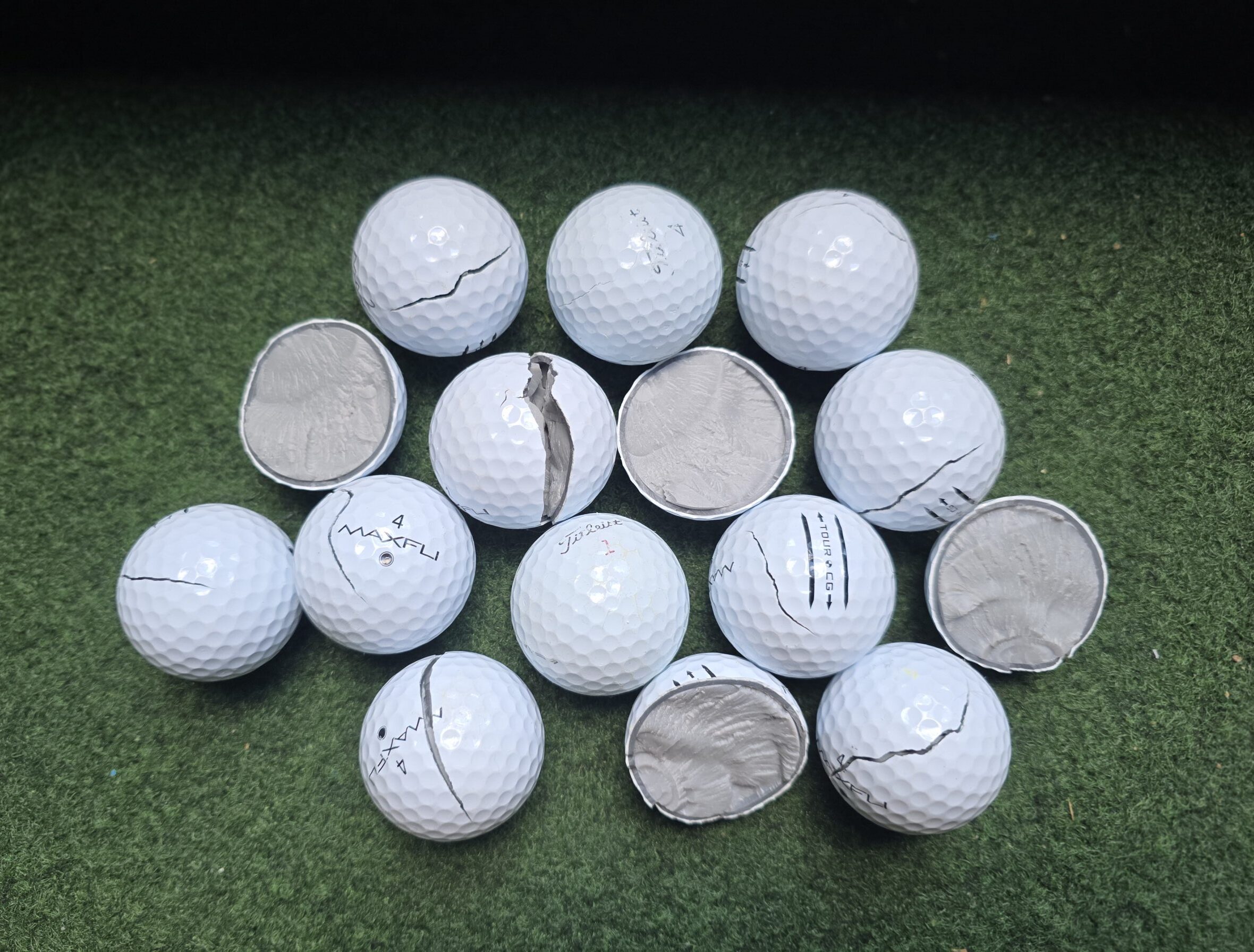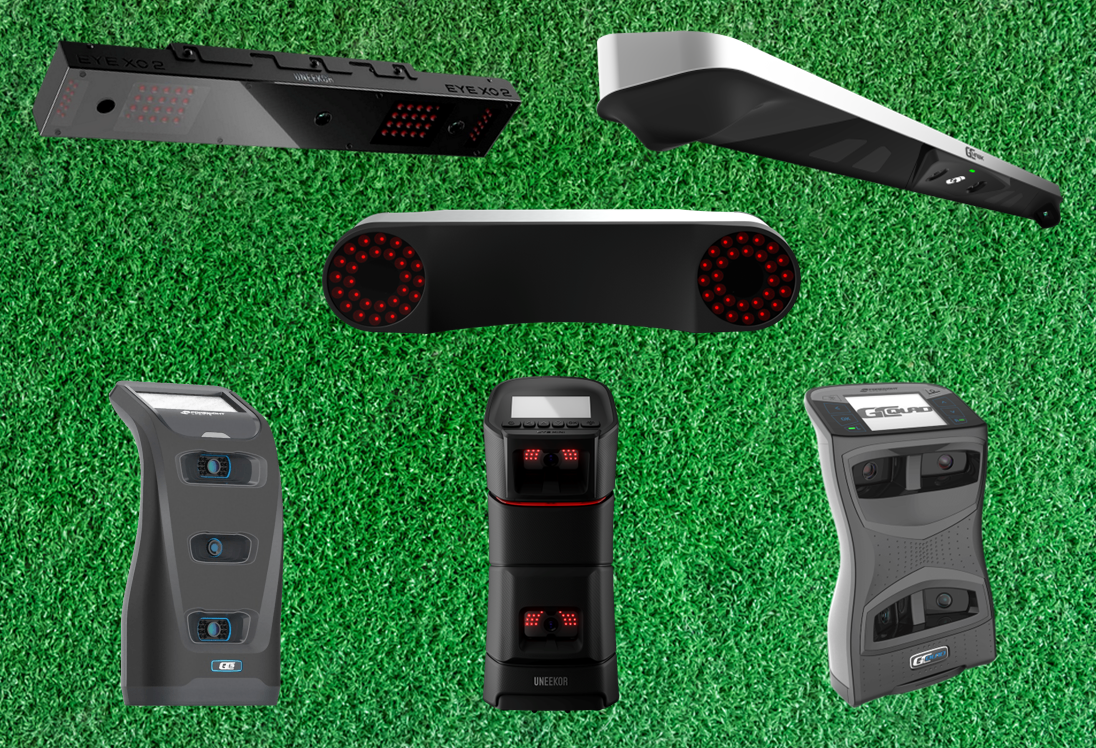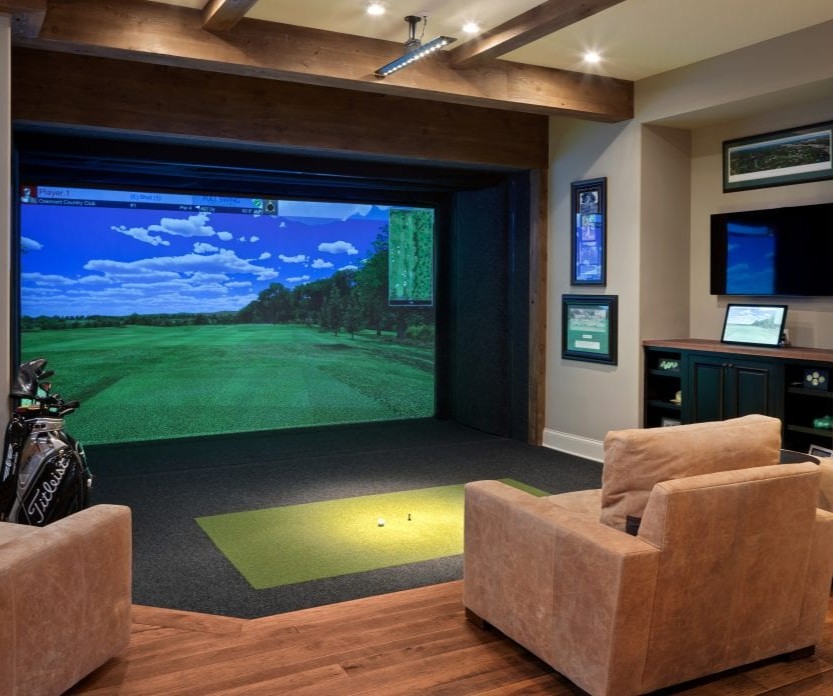
What You Need to Know Before Building a Golf Simulator
Building a golf simulator is an exciting project, but there’s a lot more to it than just buying a launch monitor and hitting into a net. If you want a realistic, high-quality experience, every piece of your setup needs to work together—from the space itself to the technology powering it.
With so many options on the market, it’s easy to get overwhelmed. The key is making sure everything is chosen, installed, and configured properly the first time. No one wants to spend thousands only to realize their setup doesn’t work for their swing, their space, or their long-term needs.
Here’s what you need to know before getting started.
1. Space Requirements – The Foundation of Your Setup
Before you buy anything, measure your space carefully. This is the most common mistake people make, and it can lead to major issues down the road.
- Ceiling Height: A minimum of 9 feet, but ideally 10+ feet if you have a higher swing.
- Width: At least 10 feet to allow for a comfortable setup, more if you want a center-hitting position.
- Depth: Around 15 feet or more to fit your hitting area, screen, and give the ball space to return safely.
If your space is too small, even the best equipment won’t deliver a good experience.
2. Launch Monitors – Quality Matters
There are a ton of launch monitors on the market, each with different strengths and limitations. We only work with proven systems that deliver accurate data and have excellent support—because nothing is worse than a misreading launch monitor ruining your game.
Factors to consider:
- Indoor vs. Outdoor Performance: Some require more space, others struggle in certain lighting conditions.
- Data Accuracy: Ball and club data should be reliable and consistent.
- Software Compatibility: Not all monitors support every golf simulator software.
Choosing the wrong launch monitor can lead to misreads, frustration, and wasted money.
3. Computer – The Brains of Your Simulator
Your PC is just as important as your launch monitor. A weak computer can cause lag, poor graphics, and even software crashes. You’ll need:
- A powerful graphics card (GPU): This is key for running high-quality golf simulation software smoothly.
- A fast processor (CPU): Ensures quick shot processing and no frustrating delays.
- Plenty of RAM and storage: Especially important if you’re running multiple software programs.
A good rule of thumb: Don’t go cheap on your PC. If you’re investing in a simulator, make sure your system can handle it.
4. Impact Screen & Enclosure – Build It Right
Your impact screen and enclosure define the look and feel of your simulator. A poor setup can lead to image distortion, quick wear and tear, or even damage to your walls.
- Screen Durability: Cheap screens degrade fast, especially with higher swing speeds.
- Image Quality: A high-quality screen enhances immersion.
- Enclosure Protection: Prevents errant shots from damaging your space.
A well-built enclosure ensures safety and a clean, professional setup.
5. Hitting Mat – Don’t Skimp on Comfort
Your hitting mat is where you’ll spend all your time, so it needs to be comfortable, durable, and realistic.
- Turf Density: Some mats are too soft, some too firm. The wrong one can lead to wrist pain or an unnatural feel.
- Longevity: Cheap mats wear down quickly, leading to inconsistent shots.
- True Feedback: A quality mat should mimic real turf interaction.
Many golfers regret going cheap on their mat—it’s worth the investment.
6. Software – Play How You Want
Simulator software determines what courses you can play, the accuracy of your practice data, and overall immersion. Some offer ultra-realistic physics, while others focus on fun and variety.
Key considerations:
- Realism vs. Entertainment: Some prioritize accurate ball physics, others focus on casual play.
- Course Selection: Do you want to play thousands of courses or just a few?
- Practice Features: Some software offers detailed swing analysis, others focus on gameplay.
Make sure your software works with your chosen launch monitor and meets your goals.
7. Projector – Image Quality Makes a Difference
A bad projector can ruin the experience, even with a great setup.
- Brightness: You’ll need 3,000+ lumens for a clear image in normal lighting.
- Throw Distance: A short-throw projector is best to avoid shadows.
- Resolution: 1080p is standard, but 4K takes it to the next level.
Don’t let a poor projector choice hold your simulator back.
8. Accessories & Add-Ons – The Extras That Complete Your Setup
A golf simulator isn’t just about hitting balls—it’s about creating an immersive, user-friendly experience. There are plenty of extras that can enhance usability and enjoyment, including:
- Lighting: Proper lighting ensures accurate tracking and a great visual experience.
- Button Boxes: Quick-access controls for gameplay without using a keyboard/mouse.
- Audio Systems: High-quality sound makes a huge difference in realism.
- Second Monitors & TVs: Useful for displaying swing data, leaderboards, or watching golf while you play.
- Swing Cameras: Analyze your swing in real-time with dedicated camera setups.
- Webcams for Online Play: Compete with friends and interact face-to-face.
- Training Aids: From alignment tools to pressure mats, there are plenty of ways to enhance practice.
While none of these are required, they can make your simulator feel like a true high-end experience.
9. Installation – DIY vs. Professional Help
Setting up a simulator isn’t just plugging in a few devices—everything needs to be measured, mounted, and calibrated for the best experience. A poor setup can lead to:
- Misaligned sensors: Causing inaccurate readings.
- Shadows and distorted images: From improper projector placement.
- Wasted space or poor ergonomics: Making gameplay frustrating.
While some golfers attempt DIY setups, getting professional help ensures everything works properly from day one.
Get It Right the First Time
A golf simulator is an incredible investment, but only if it’s done correctly. Choosing the wrong components, not planning for your space, or failing to integrate everything properly can turn an exciting project into an expensive headache.
At Simulator Golf Solutions Hawaii, we specialize in turnkey golf simulators—custom-designed for your space, goals, and budget. Whether you’re starting from scratch or need help fine-tuning your setup, we handle everything from equipment selection to full installation and calibration.
Thinking About a Golf Simulator? Let’s Talk.
If you want a seamless, professional setup that’s ready to go on day one, reach out to us. We’ll help you build the perfect simulator—so you can focus on playing, not troubleshooting.



